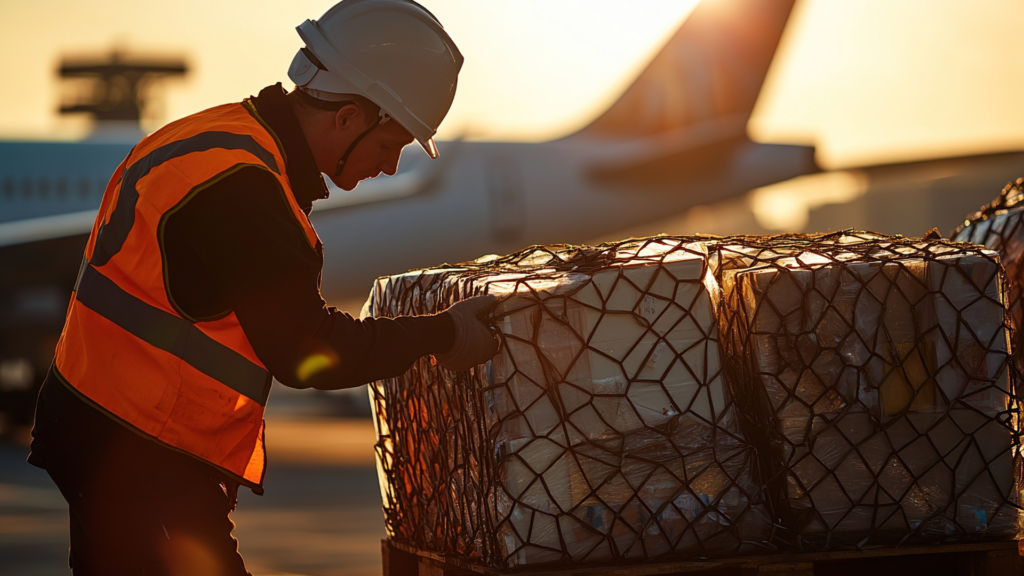Imagine a busy highway with cars whizzing by at high speeds. Suddenly, a piece of unsecured cargo breaks free from a truck, tumbling onto the road and creating a chaotic and dangerous situation. Unfortunately, this scenario is all too common. The AAA Foundation for Traffic Safety reports that road debris causes thousands of accidents each year, resulting in injuries, fatalities, and significant property damage.
Proper cargo securement is not just a matter of compliance; it’s a critical safety practice that protects both road users and the cargo itself. The Federal Motor Carrier Safety Administration (FMCSA) has established comprehensive regulations to ensure safe and secure cargo transportation on commercial vehicles.
What is Cargo Securement?
Cargo securement refers to the measures taken to prevent cargo from leaking, spilling, blowing, or falling from a commercial vehicle. This includes using appropriate securement devices, adhering to weight limits, and following proper loading and securing procedures.
FMCSA Regulations
The FMCSA revised its cargo securement regulations in 2002 to improve highway safety. These regulations aim to:
- Prevent cargo from shifting or falling: Ensure cargo remains stable during transport.
- Maintain vehicle stability: Prevent cargo from affecting the vehicle’s handling or braking.
- Protect cargo from damage: Minimize damage to cargo during transportation.
- Harmonize regulations: Align U.S. cargo securement requirements with Canada and Mexico’s requirements.
Applicability
FMCSA regulations apply to cargo that:
- Has a defined shape (excluding liquids, gases, grains, etc.).
- It is carried within a commercial vehicle’s structure.
Performance Criteria for Securement Systems
The FMCSA has established performance standards to ensure securement systems can withstand transportation forces, including:
- Tiedown strength: Tiedown assemblies (chains, wire rope, webbing) must meet minimum strength requirements.
- Working load limit: Securement devices must not be loaded beyond their designated limit.
- Downward force: Securement systems must apply sufficient downward force to prevent cargo from shifting.
- Immobilization: Cargo must be firmly immobilized or secured to prevent movement.
Types of Securement Devices
Securement devices ensure that cargo remains in place and prevent shifting, tipping, or rolling. These include:
- Tiedowns: Chains, wire ropes, straps, and other devices that secure cargo to the vehicle.
- Dunnage: Materials used to fill gaps between cargo and vehicle walls to prevent movement.
- Shoring bars: Bracing tools used to support cargo.
- Blocking and bracing: Materials used to prevent cargo from shifting or tipping.
Securement Device Requirements
- Good condition: Securement devices must be free of damage or defects compromising their strength.
- Proper use: Tiedowns must be used per manufacturer instructions and FMCSA regulations.
- Edge protection: Use edge protection to prevent tie-downs from being cut or abraded.
- Secure attachment: Tiedowns must be securely attached to prevent loosening or detachment.
FMCSA General Securement Rules
- Immobilization: Cargo must be firmly secured using tie-downs, dunnage, or shoring bars.
- Restraint devices: Chocks, wedges, or cradles must be used to prevent rolling.
- Aggregate working load limit: The total working load limit of all tiedowns must be at least half the weight of the cargo.
- Number of tiedowns: The minimum required tiedowns depend on cargo weight and length.
- Leaderboards and bulkheads: Front-end structures used for securement must meet FMCSA strength and height standards.
Specialized Securement for Certain Commodities
Certain types of cargo require specialized securement due to their unique characteristics. FMCSA provides specific regulations for:
- Logs: Must be transported in cradles or secured against rolling.
- Dressed lumber: Bundles must be secured as a single unit.
- Metal coils: These require multiple tiedowns and bracing.
- Paper rolls: Must be tightly packed and secured.
- Concrete pipes: Must be secured to prevent rolling.
- Intermodal containers: Cargo inside must be secured according to general or commodity-specific rules.
- Vehicles: Different securement rules apply to cars, trucks, and heavy equipment.
- Roll-on/roll-off and hook-lift containers: Require specialized securement due to their unique design.
- Large boulders: Must be secured to prevent shifting.
When transporting these commodities, consult FMCSA regulations for specific securement requirements.
Why Cargo Securement Matters
Cargo securement is a critical aspect of safe and efficient transportation. By following FMCSA regulations, using appropriate securement devices, and implementing best practices, drivers and fleet operators can:
- Reduce the risk of highway accidents and injuries.
- Prevent costly cargo damage.
- Avoid legal penalties and compliance violations.
- Improve overall road safety for all motorists.
Expand Your Knowledge
Enhance your expertise with our FMCSA Safety: Cargo Securement Training Course.
This course provides a comprehensive foundation in cargo securement, but there’s always more to learn. For a deeper dive into regulations and industry best practices, consider enrolling in our specialized Cargo Securement and Transportation Safety Program.
References
Federal Motor Carrier Safety Administration (FMCSA) – Cargo Securement Regulations
FMCSA Compliance, Safety, Accountability (CSA) – Safety Planner
National Highway Traffic Safety Administration (NHTSA) – Traffic Safety Facts
The Atlantic Research Team is our in-house editorial staff. Content published under this name is a collaborative effort, written and reviewed by multiple safety and HR specialists to ensure all information is accurate, practical, and up to date.
Latest posts by Atlantic Research Team
(see all)

